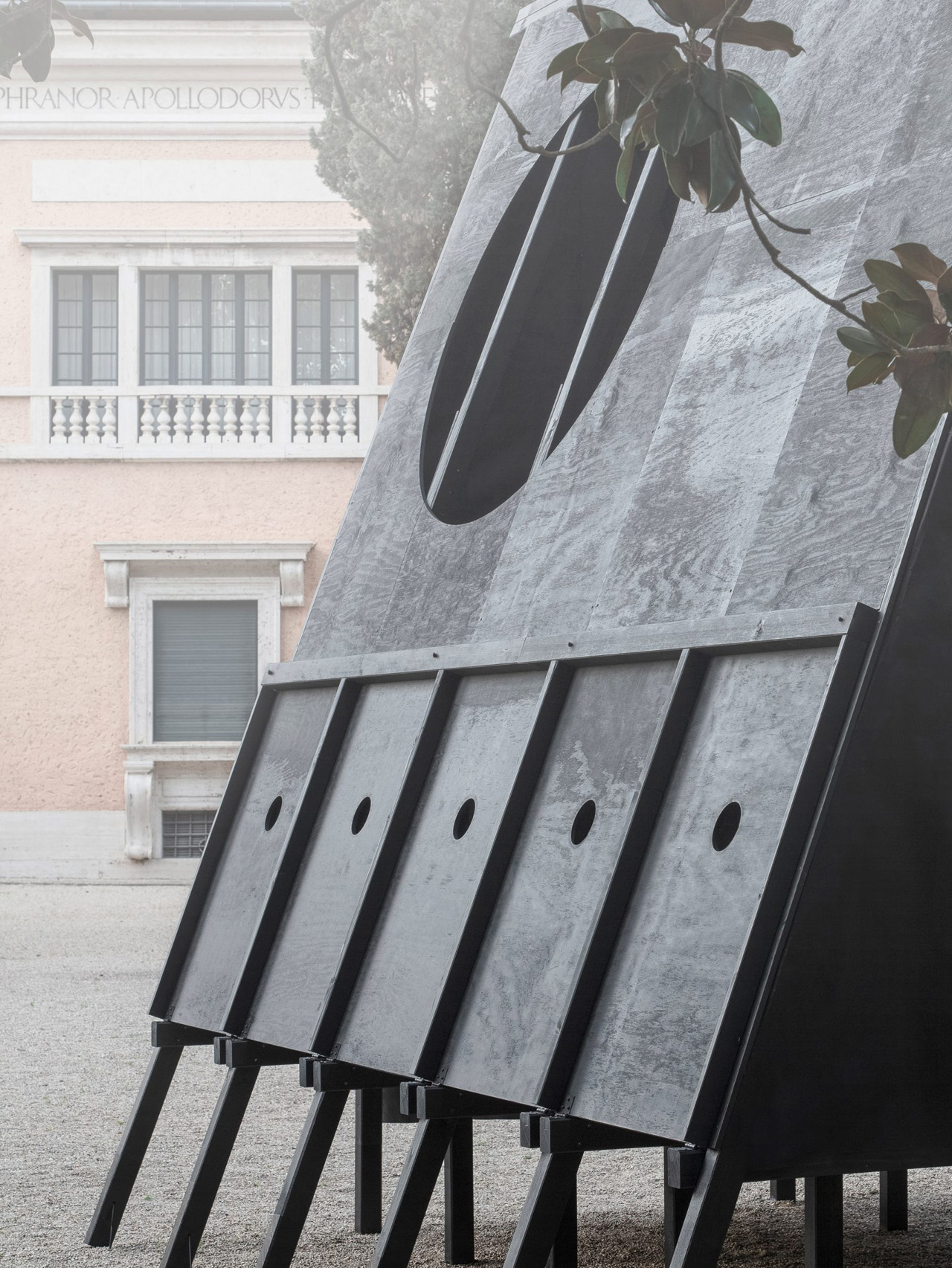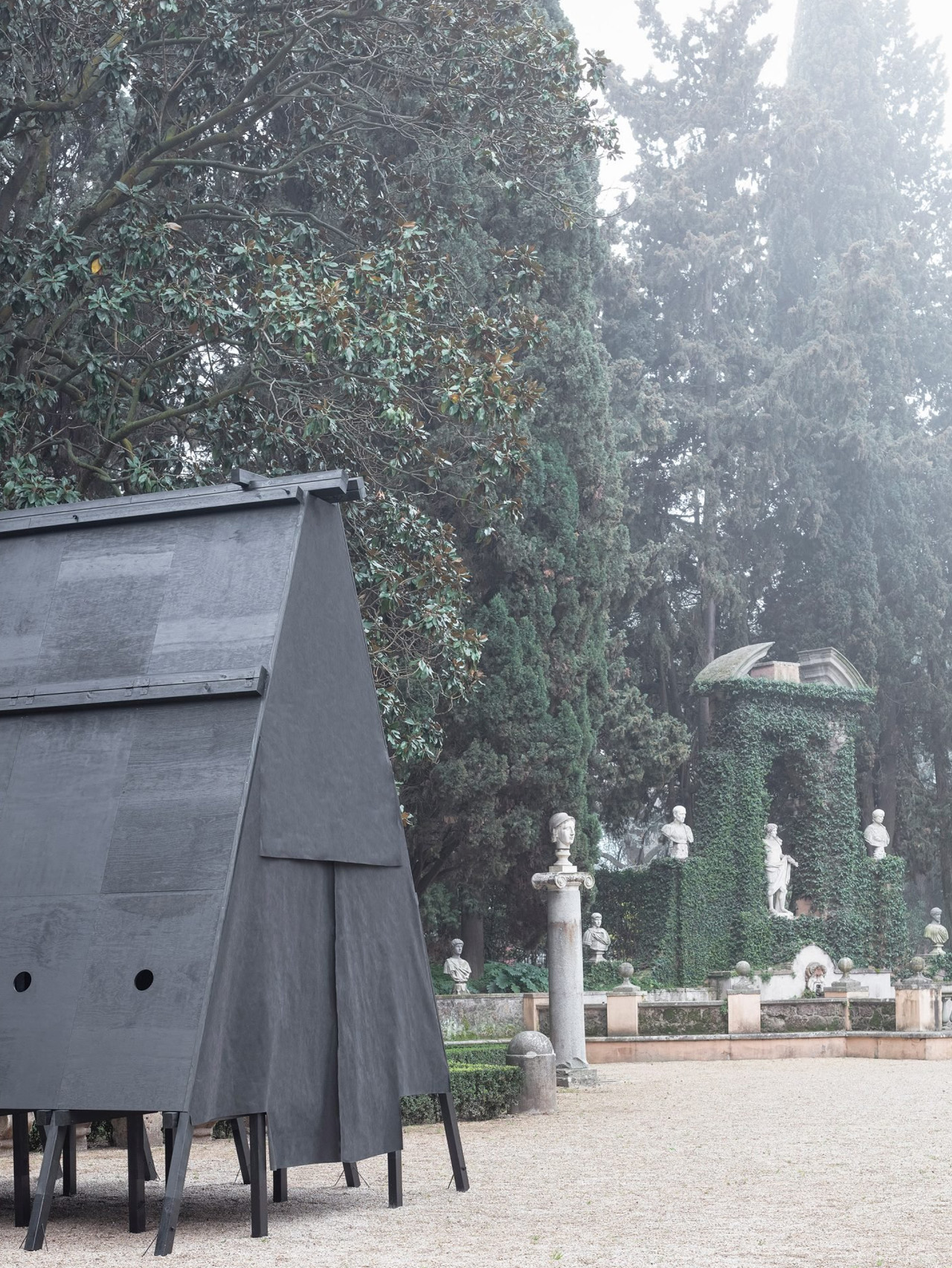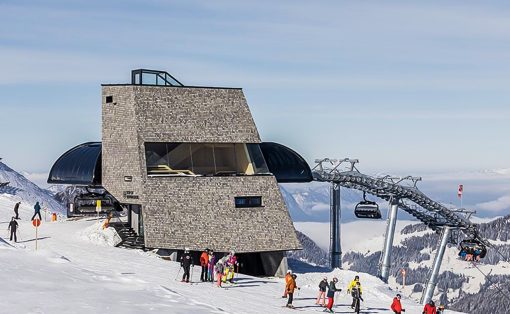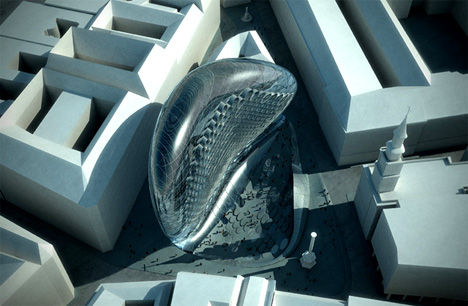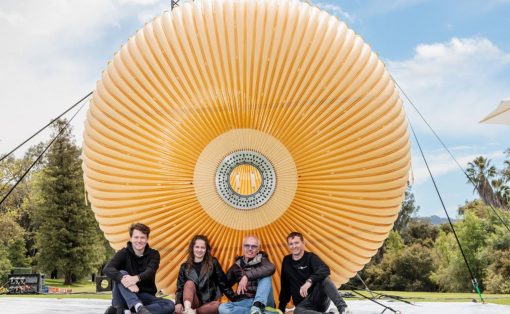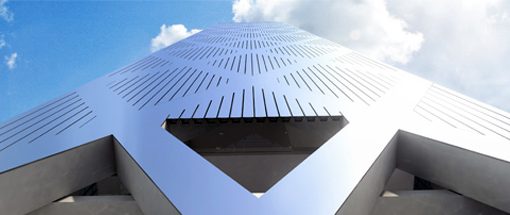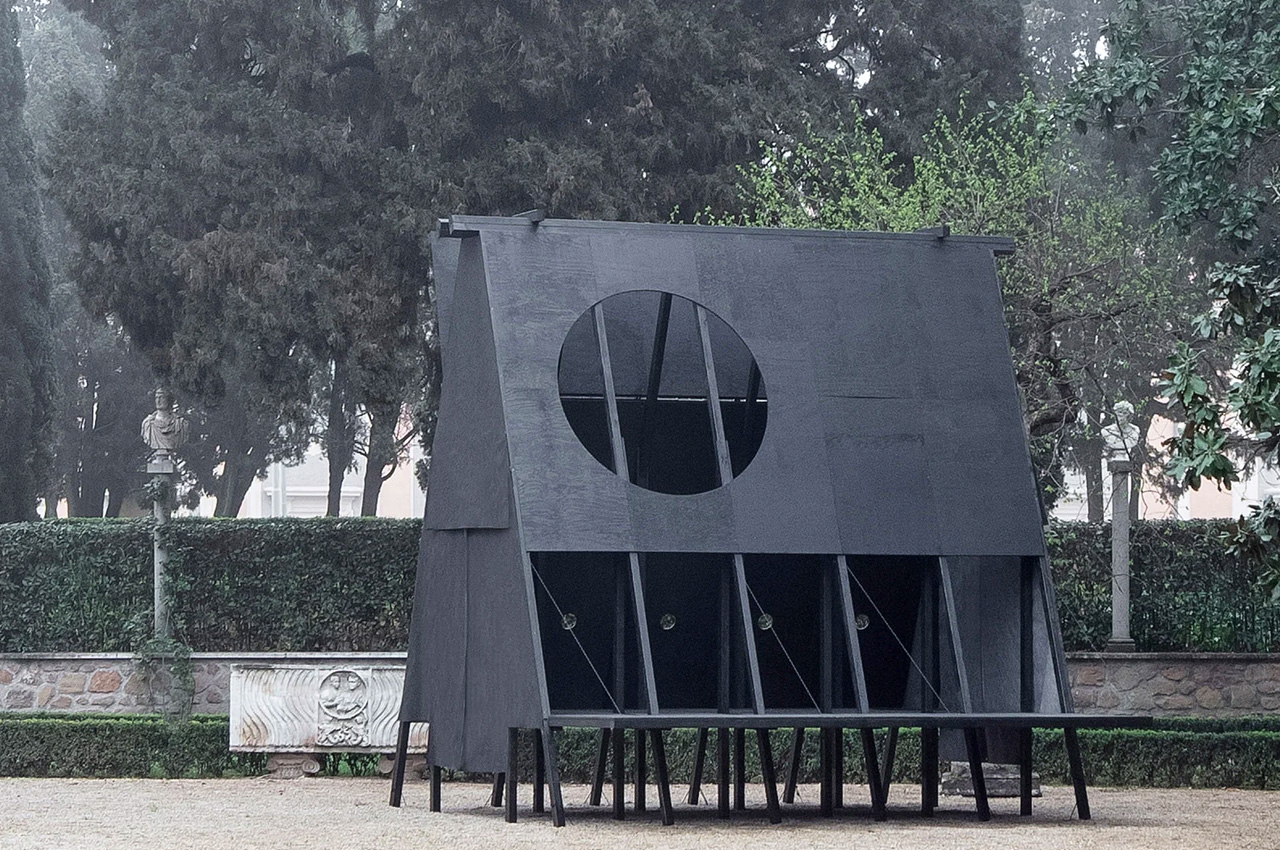
Designed by the architecture studio Buero Wagner is a black-painted timber pavilion on the grounds of Villa Massimo. Villa Massimo is the home of the Germany Academy in Rome, and the tent-like black pavilion has been installed to be utilized for a variety of reasons – from an exhibition space to a bar. The demountable and flexible pavilion is quite a versatile structure.
Designer: Buero Wagner

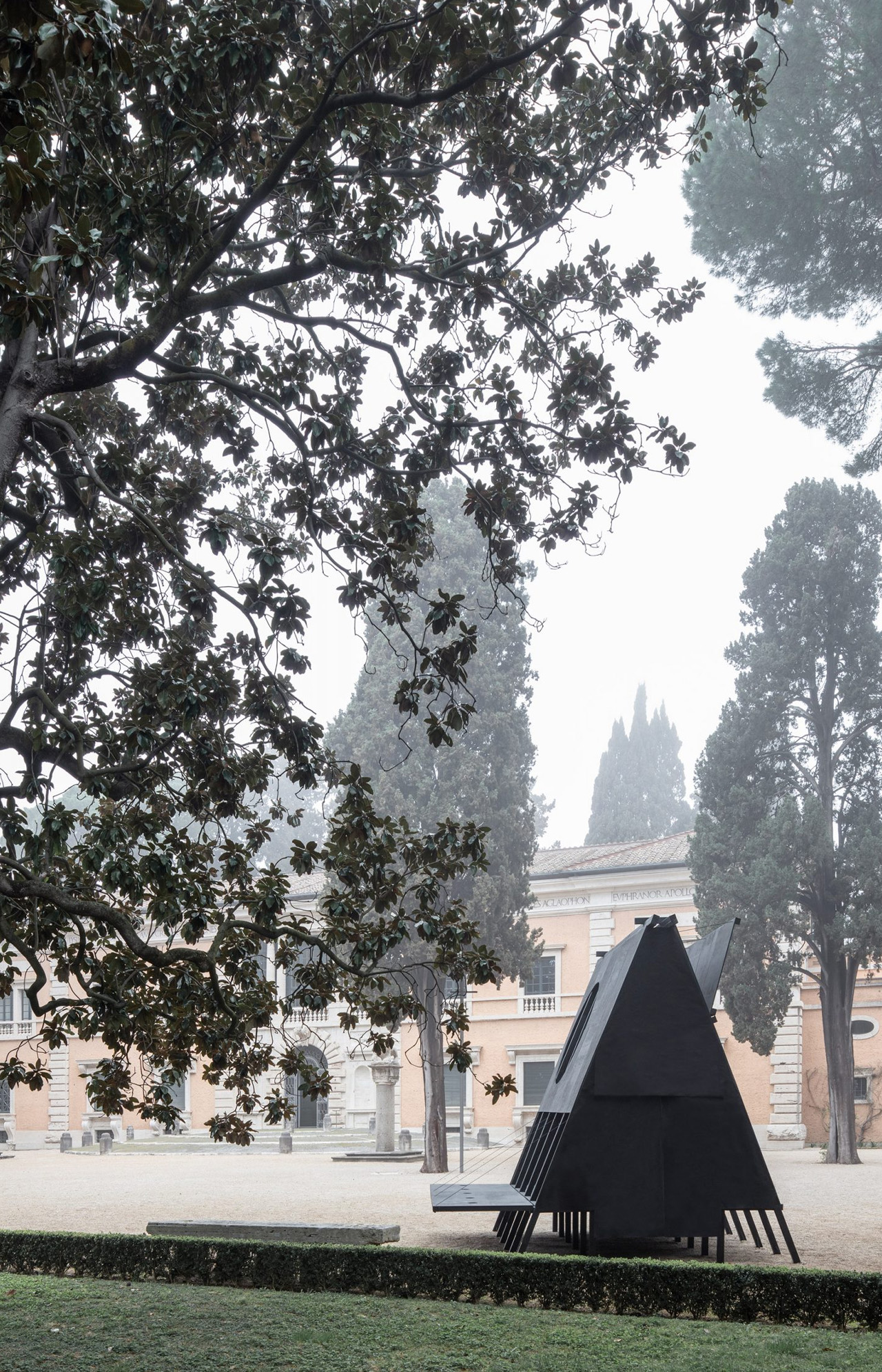
The Munich-based studio originally designed the pavilion in 2022, which has since been used in a wide range of exhibitions and events across Rome. It was built using a structural wooden frame that is clad in black plywood panels, which are demountable. The pavilion can be quickly and efficiently moved by five people or on a car trailer.
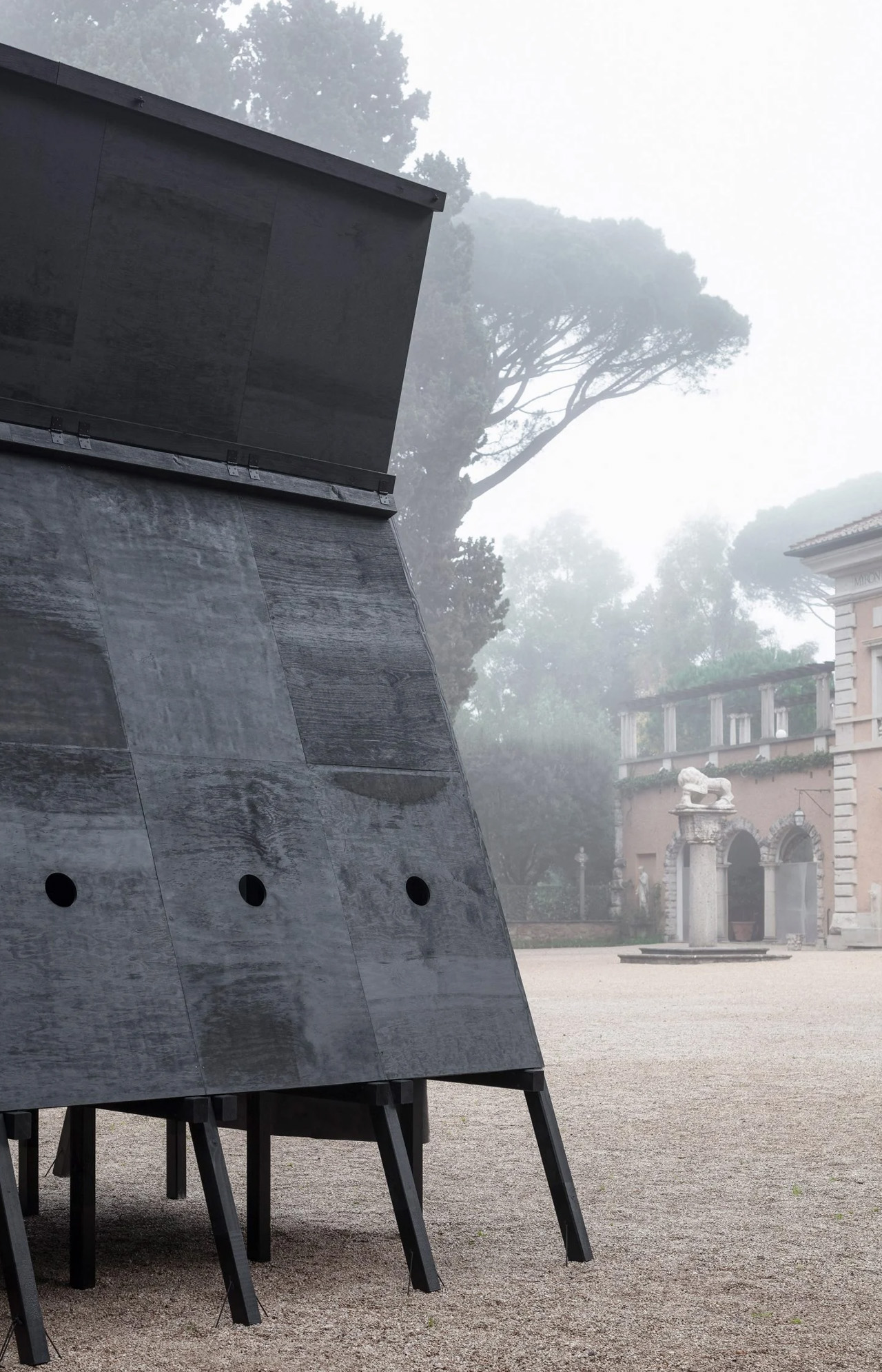
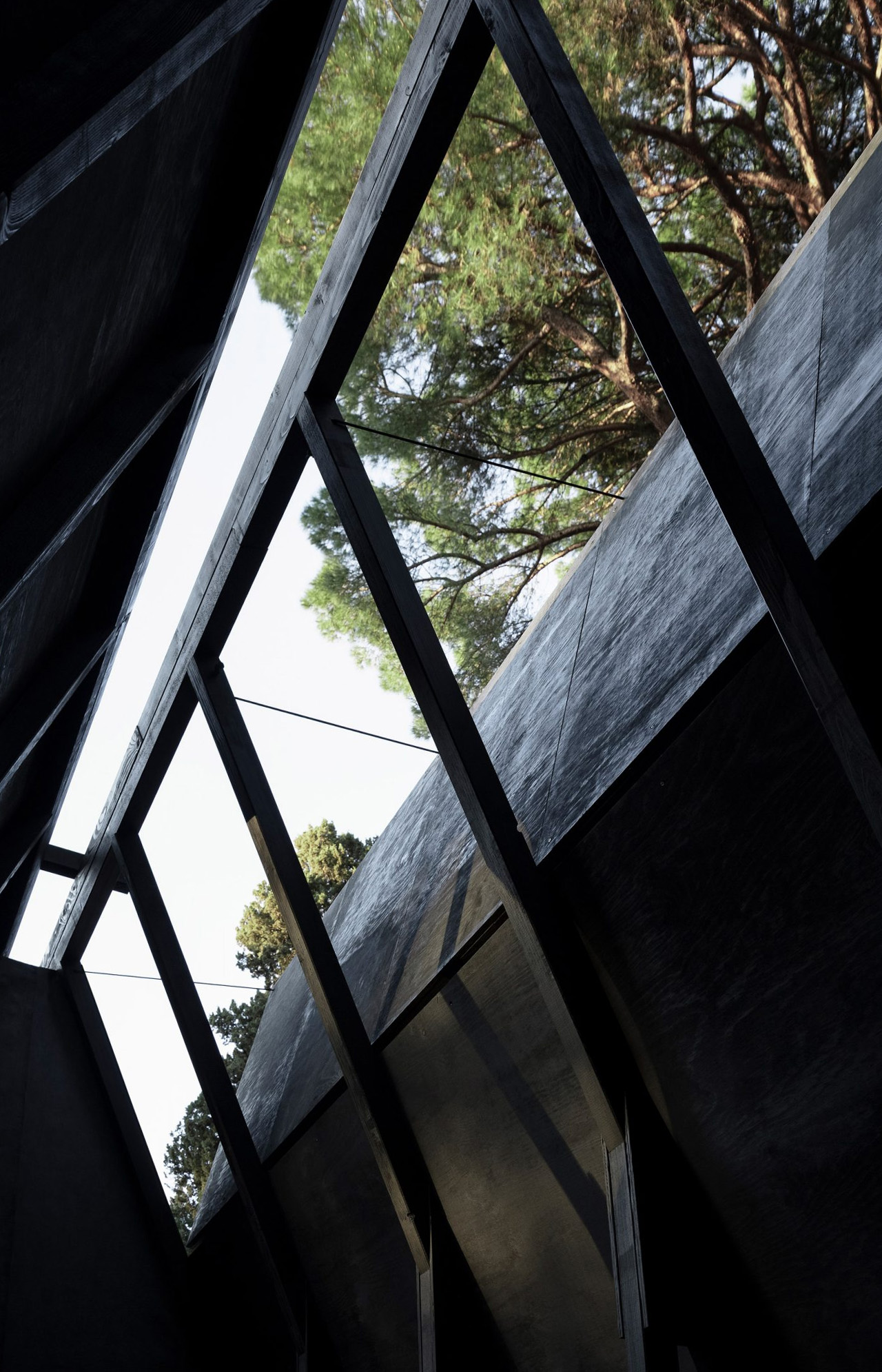
“The Black Pavilion was designed to be used as flexibly as possible,” said the studio. The pavilion can be used as an intimate exhibition space or transformed into a bar-like structure equipped with low tabletops, that can be used by opening out the hinged panels on the roof. If the pavilion is being used for performances or bigger gatherings, the two halves of the structure can be divided completely, to create an open space between them. “For exhibitions, objects are placed on wooden pedestals between the support structure and illuminated through small circular openings in the roof surfaces. With the roof surfaces folded out, a table-like area is created that can be used as a bar for cooking and eating, [and] in order to use the pavilion for larger events the sides can be placed with increased distance between each other,” explained the studio.
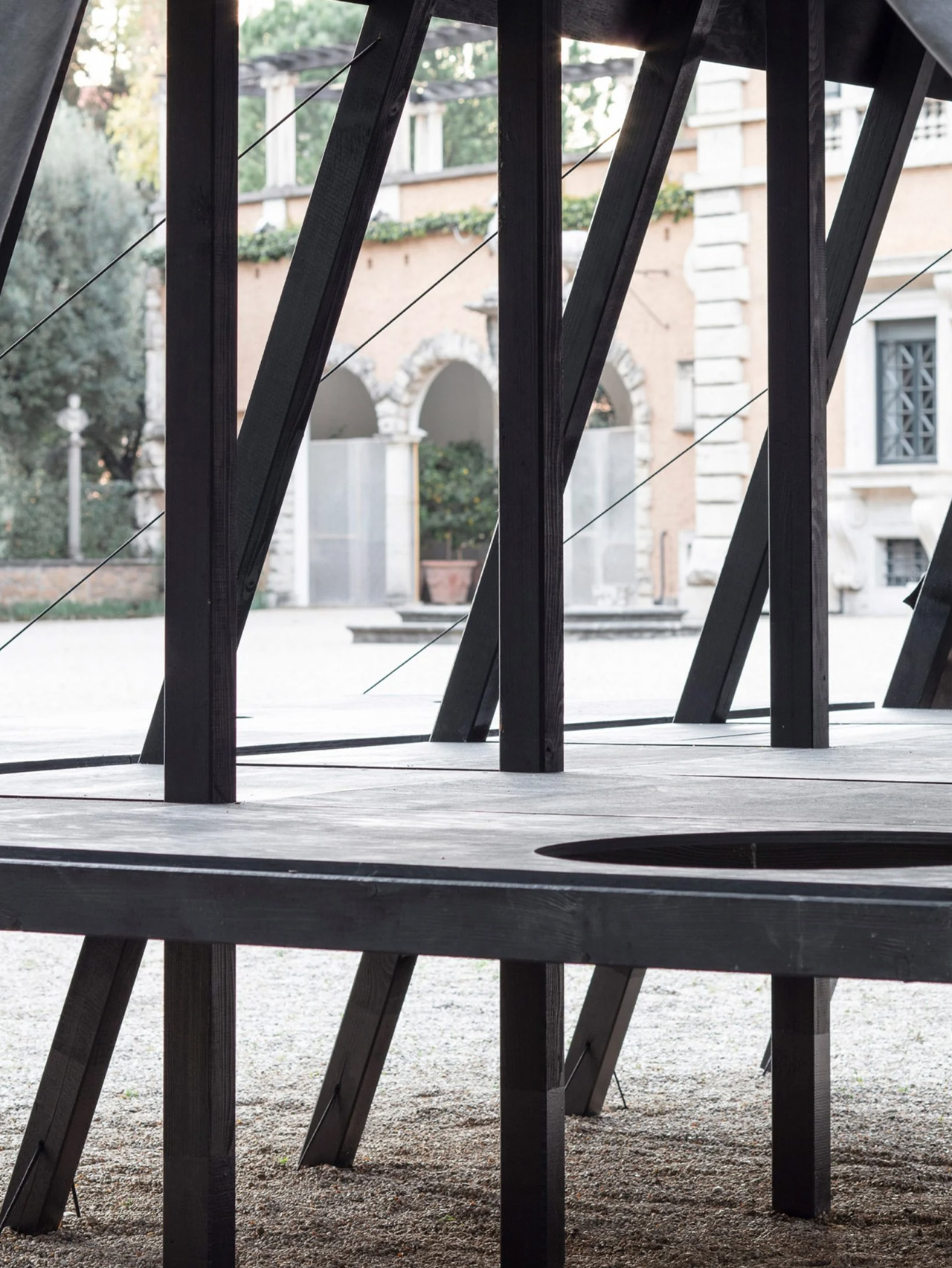
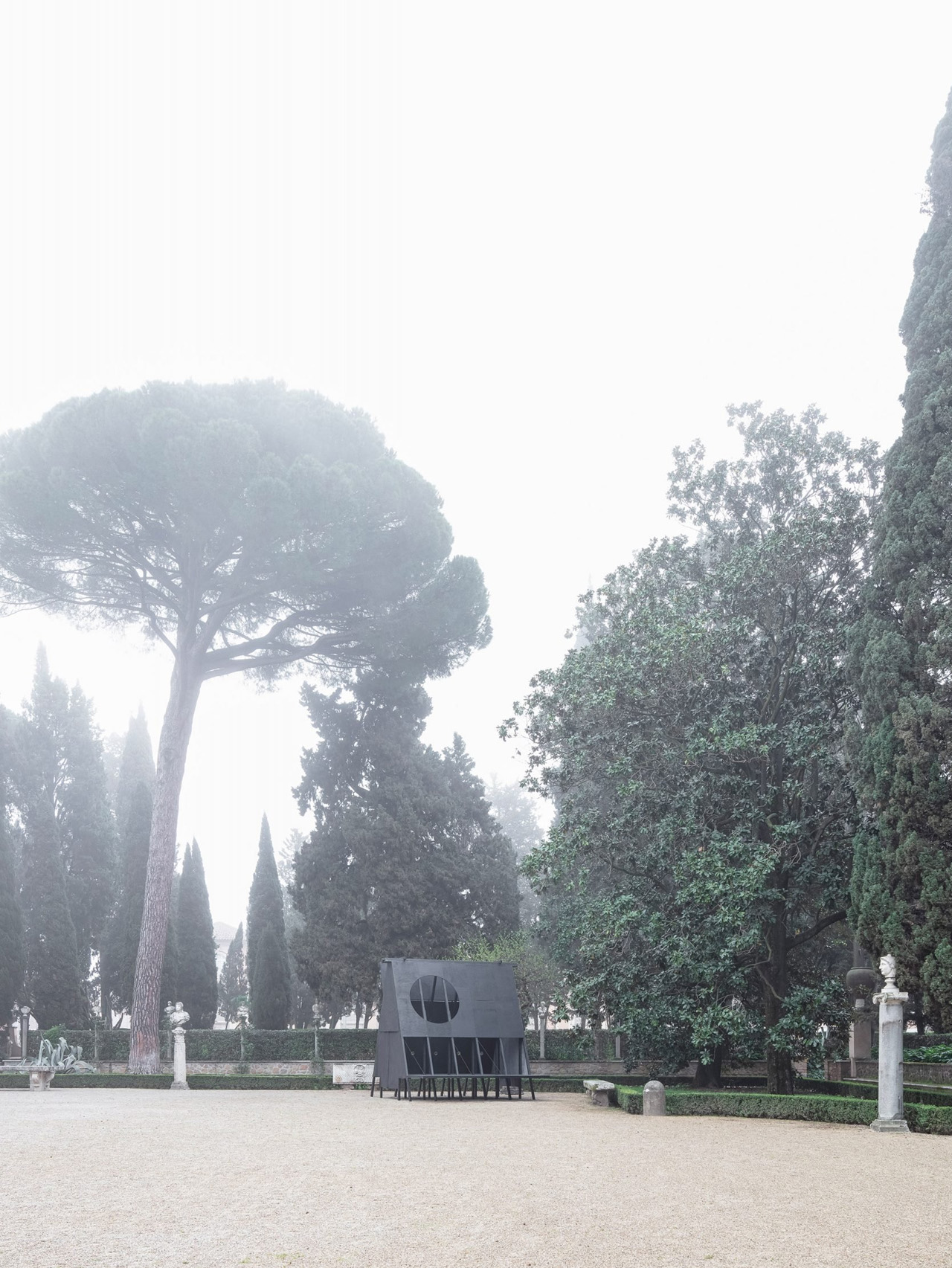
The pavilion has been marked by small and large circular openings that provide an atmospheric and spacious interior to it. These can be accessed via black curtains at the ends. The curtains were made using repurposed roofing membrane. The interiors and exterior of the pavilion feature a dark black finish, this creates a stark and vivid contrast to the surroundings of the pavilion, especially if it is placed in a natural setting. “In conjunction with the dark tonality, a negative space is created inside, through which focused and, due to the lack of reflections in the interior, color-intensified views are made possible,” concluded Buero Wagner.
